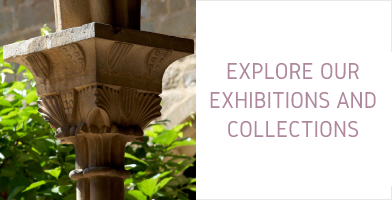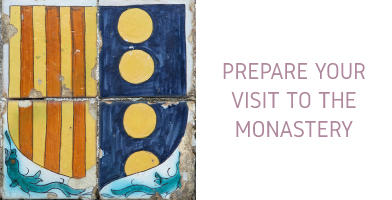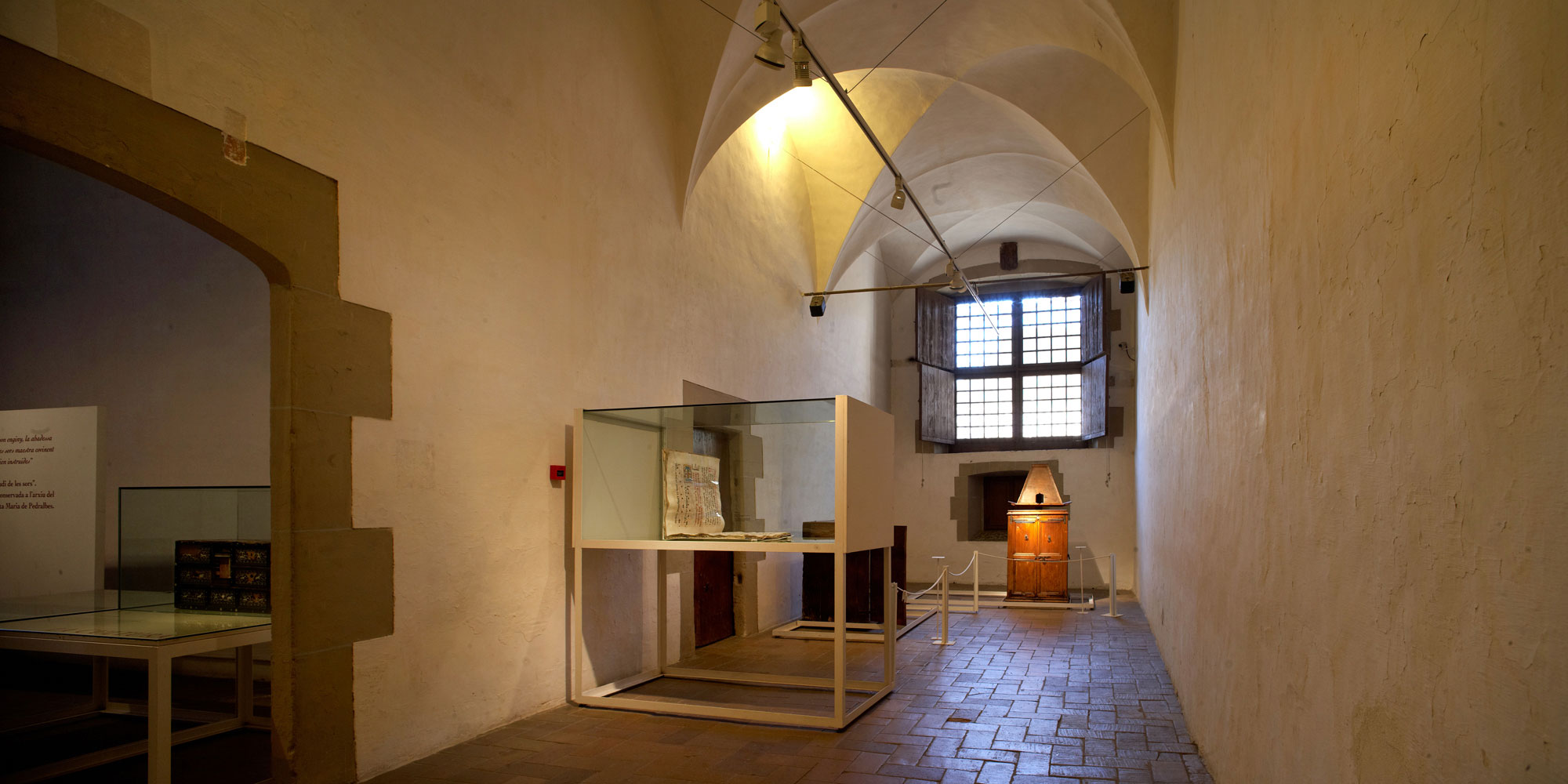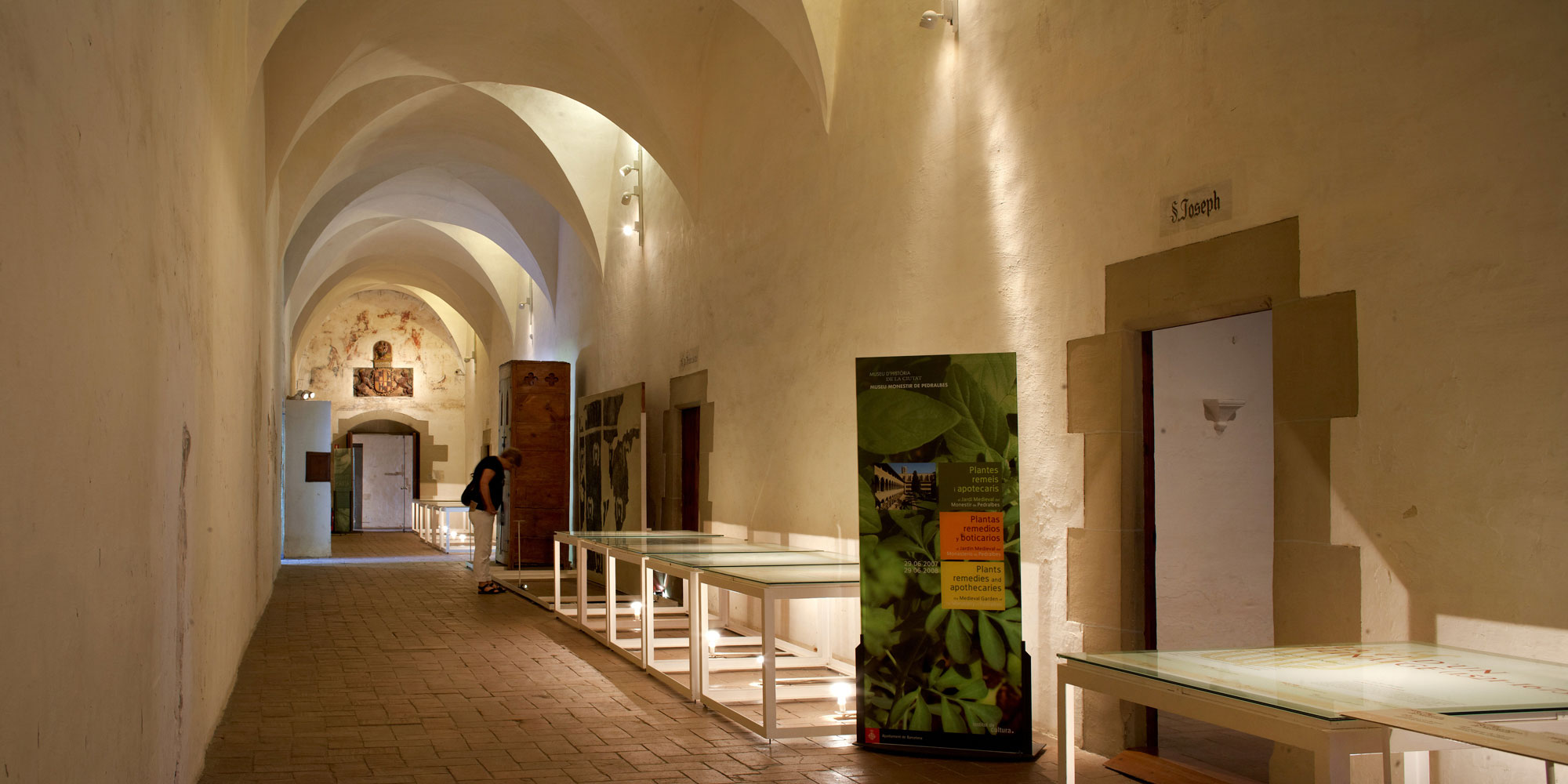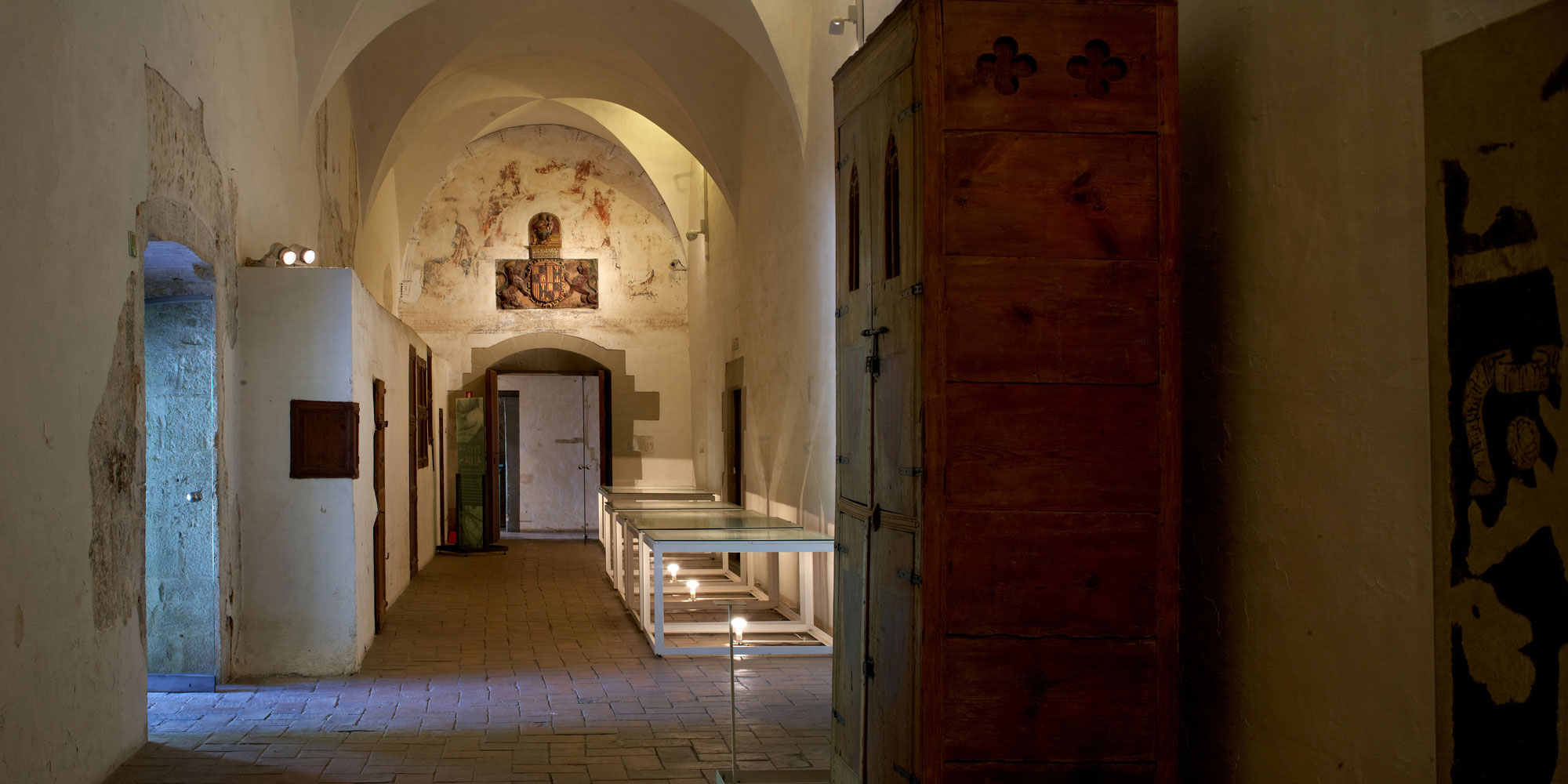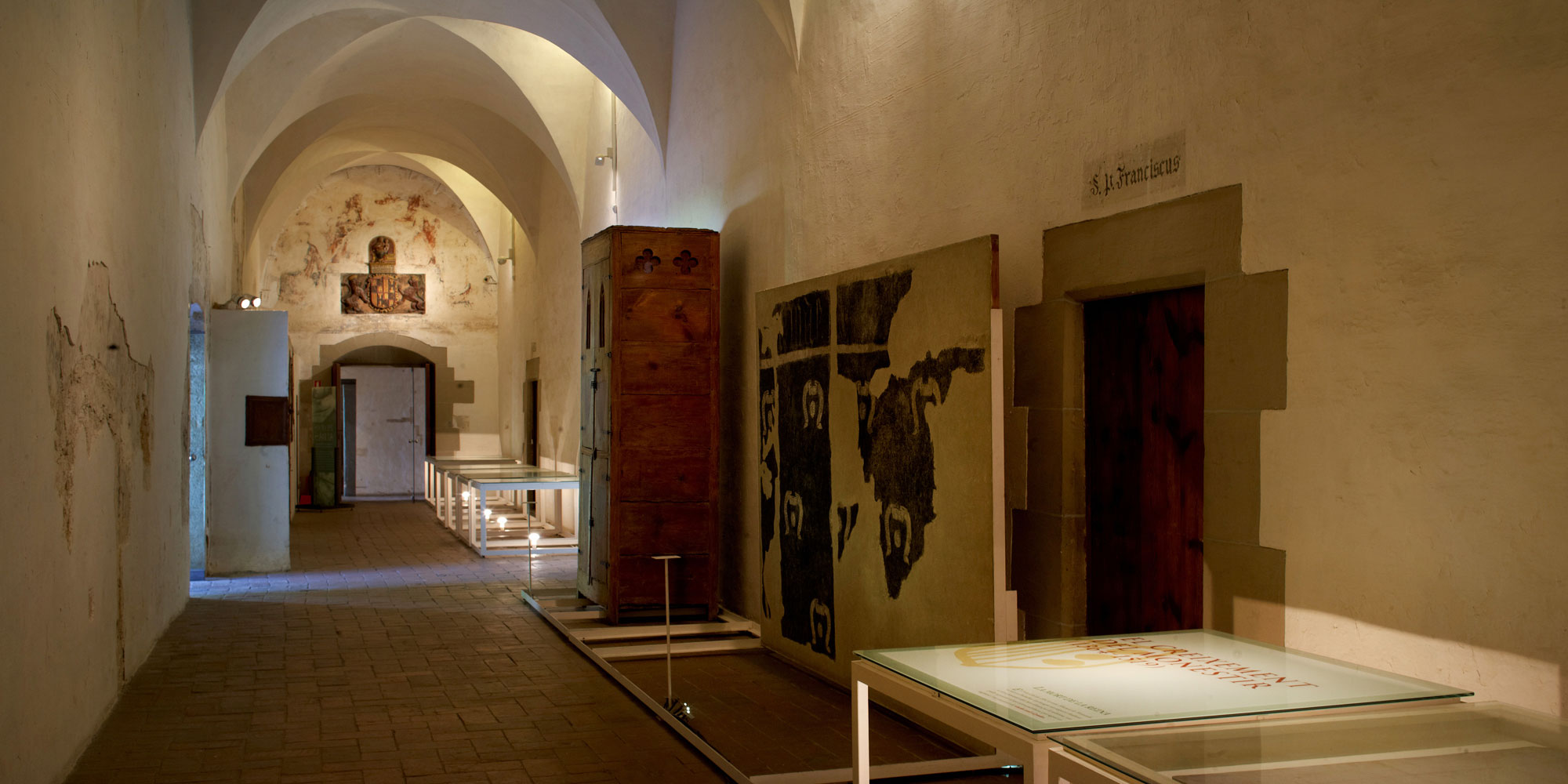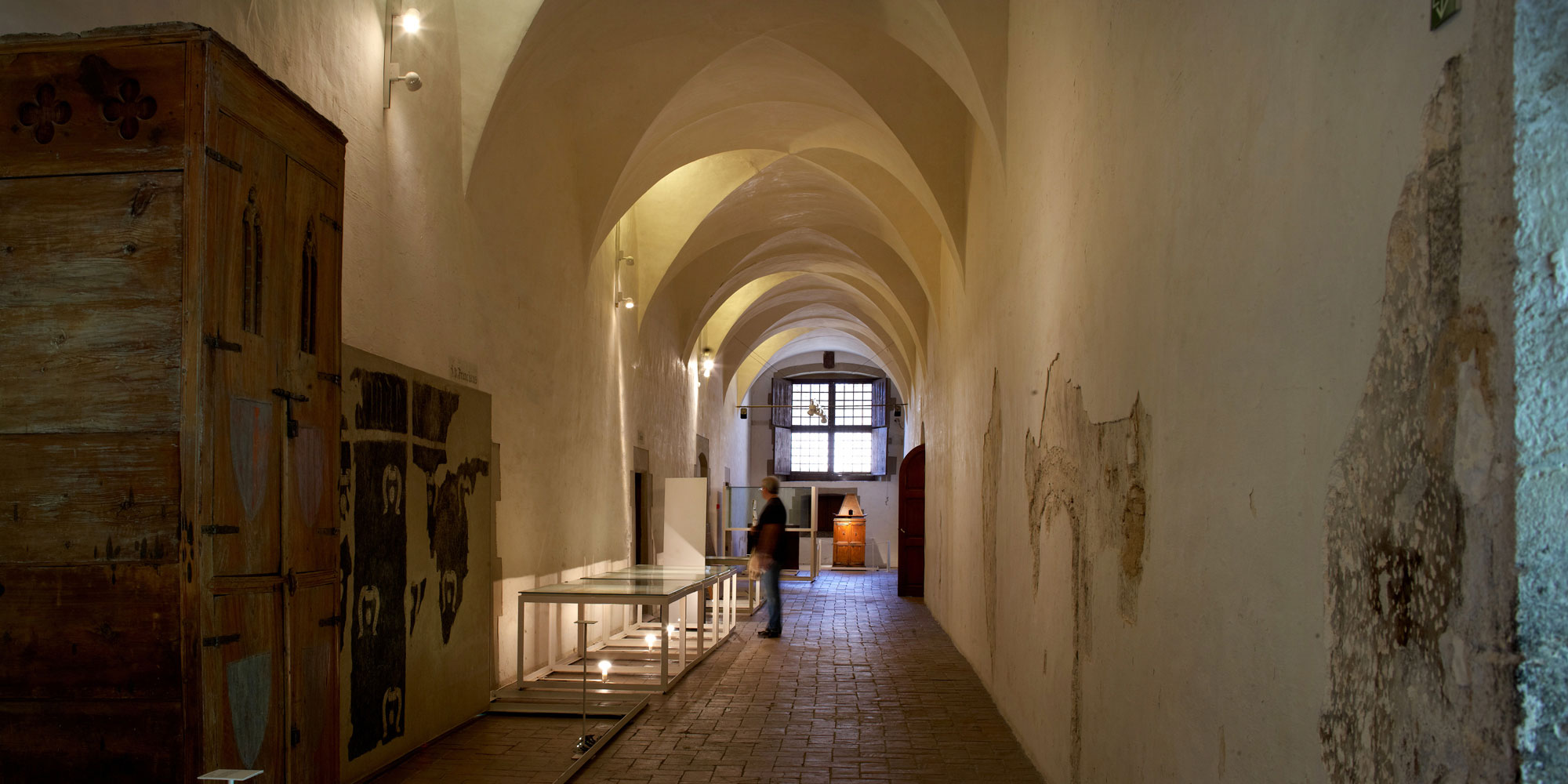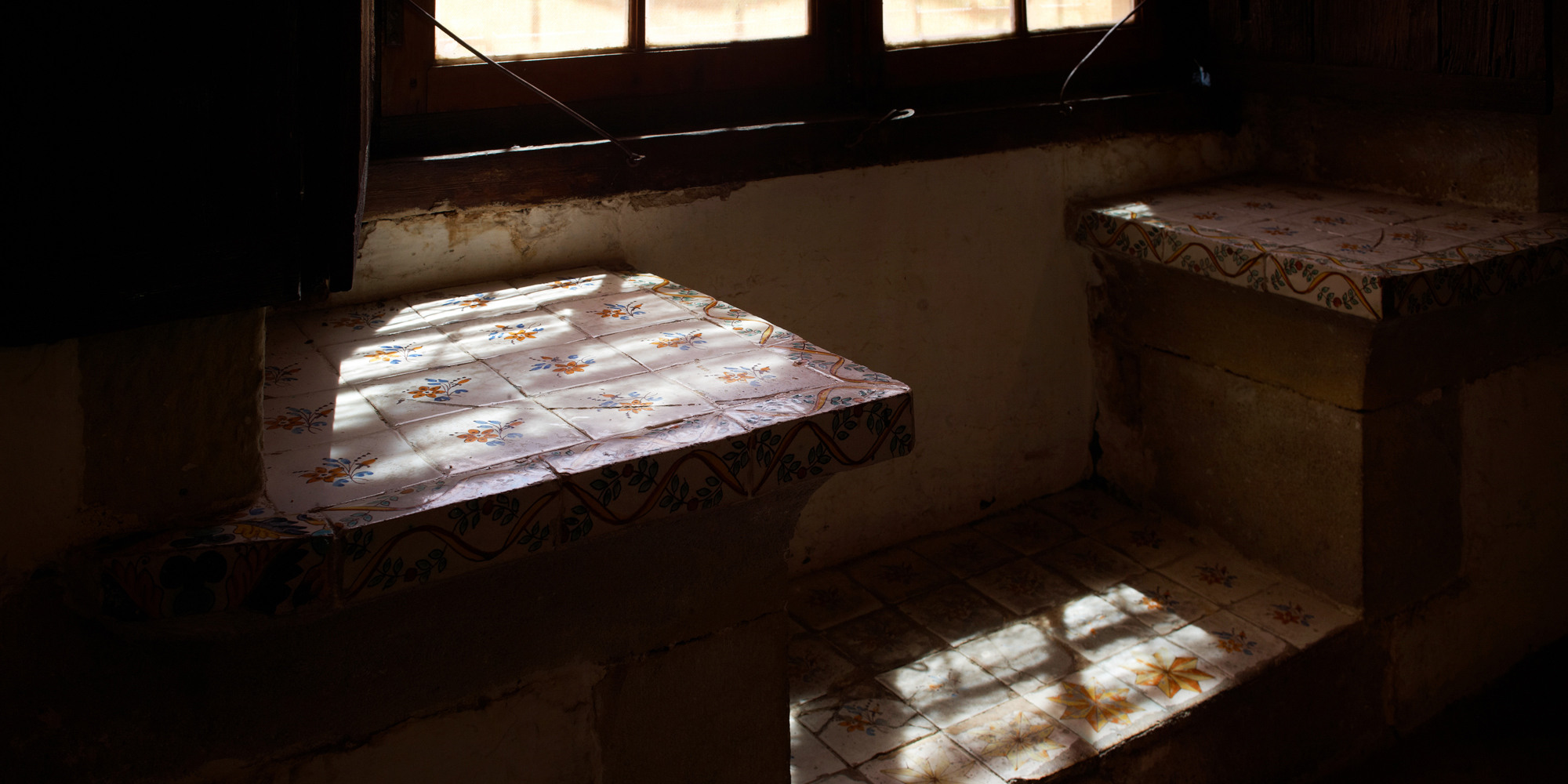Títol
Petras Albas. The Monastery of Pedralbes and the Montcada Family
Pedralbes, which comes from the Latin petras albas (white stones), was the place chosen by Queen Elisenda de Montcada to found a monastery of Poor Clares. The decision to choose precisely this order was marked by the spirituality of the time and the royal family’s devotion to the mendicant orders. What was the significance of the fact that a queen, from one of the most important families in Catalonia, decided to found a monastery where other women in her family would go on to become abbesses during the following four centuries? Who they were and where did they come from these women who decided to become nuns at Pedralbes? And what was life like in the enclosure of the monastery?
The exhibition “Petras Albas. The Monastery of Pedralbes and the Montcada Family (1326-1673)”, located in the former monastery infirmary, aims to answer these and other questions related to the Montcada family and its close ties with the monastery, using two explanatory approaches that physically alternate depending on the characteristics of the spaces where the exhibition is located.
The first illustrates the origins of the Montcada family in order to show who Elisenda was and why she wanted to found the monastery. It also examines her presence, once a widow, in the daily life of the Poor Clares, the legacy she left after her death and the critical points in the later history of the monastery. The second approach is related to specific thematic aspects of life within the community − religious devotion, daily life and cultural concerns − through a selection of pieces drawn mostly from the monastery’s own collection.
Almost from the very beginning Pedralbes was a centre of power for the women who lived there and this situation lasted until the 17th century, when the monastery entered into a certain decline. The Montcada family, whose origins go back to the 11th century, exerted a great deal of influence on the governing bodies of the community, from the foundation of the monastery until nearly the 17th century.






